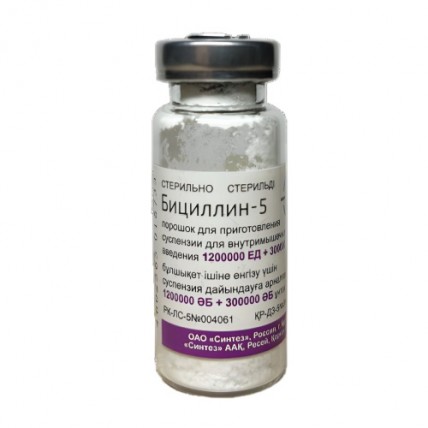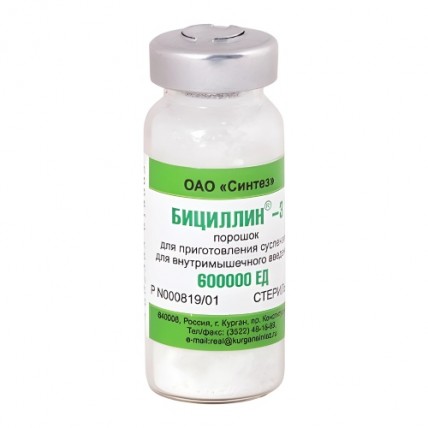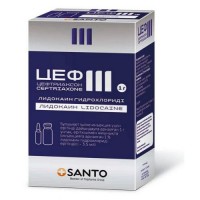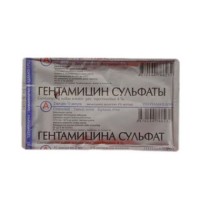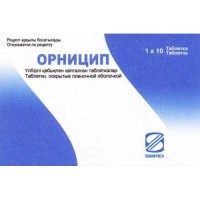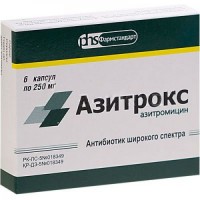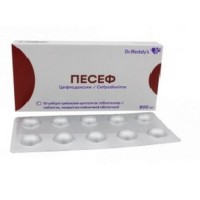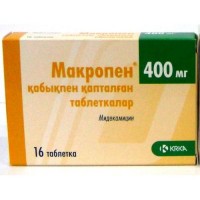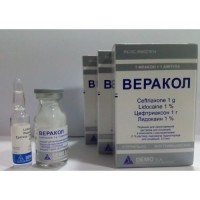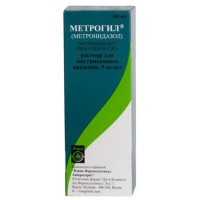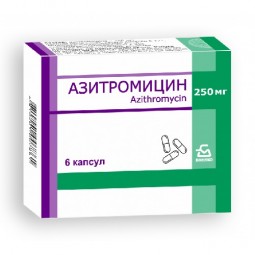BICILLIN®
- $4.00
What is BICILLIN®?
BICILLIN® is a long-acting antibiotic from the penicillin group used to treat and prevent a variety of bacterial infections.
It is part of the beta-lactam family, which works by preventing bacteria from forming cell walls, ultimately killing the bacteria or stopping their growth.
BICILLIN® is particularly effective against bacterial infections that are sensitive to penicillin and is administered via intramuscular injections to ensure slow, prolonged absorption into the bloodstream.
It is most often used in infections such as syphilis and for the prevention of rheumatic fever, but it can also treat certain skin and throat infections.
How does BICILLIN® work?
BICILLIN® is a beta-lactam antibiotic that works by interfering with the bacterial cell wall formation.
Here’s how it operates:
- Inhibiting cell wall synthesis: BICILLIN® contains penicillin, which targets and binds to specific proteins in bacteria (penicillin-binding proteins). These proteins are crucial for synthesizing and maintaining the bacterial cell wall.
- Weakening the cell wall: By disrupting the construction of the cell wall, BICILLIN® causes the bacteria to become unstable, making them unable to survive or reproduce.
- Bacterial death: As the bacteria are unable to maintain their structural integrity, they eventually burst and die, eliminating the infection from the body.
BICILLIN® is long-acting, meaning that once injected into the muscle, the medication is slowly absorbed into the bloodstream over time.
This ensures a consistent level of the antibiotic in the body, making it effective for extended periods without needing frequent doses.
This mechanism is particularly effective against slow-growing bacteria, such as those causing syphilis or skin infections like erysipelas.
Additionally, BICILLIN® is often used for preventive purposes in conditions like rheumatic fever because its long-acting nature can protect against bacterial infections over weeks or months
What is BICILLIN®-3?
BICILLIN®-3 is a combination antibiotic that contains three active ingredients: benzathine benzylpenicillin, sodium benzylpenicillin, and novocaine benzylpenicillin.
This formulation is designed for treating and preventing specific bacterial infections in adults.
Key Uses of BICILLIN®-3:
- Treatment of bacterial infections: BICILLIN®-3 is commonly used to treat infections like erysipelas, a skin infection caused by bacteria. It is also highly effective in treating syphilis in its early stages (primary and secondary) as well as latent syphilis, provided there is no involvement of the nervous system (neurosyphilis).
- Prevention of serious complications: The medication is often prescribed to prevent conditions such as rheumatic fever, which can lead to long-term heart problems, and post-streptococcal glomerulonephritis, a type of kidney disease that can occur after a streptococcal infection.
Precautions Before Using BICILLIN®-3:
- Allergies: Patients who are allergic to benzylpenicillin, soy, peanuts, or other beta-lactam antibiotics (like cephalosporins, carbapenems) should not use BICILLIN®-3. Severe allergic reactions, such as anaphylaxis, have been reported and may be life-threatening. Therefore, it’s critical to inform your doctor of any known allergies before starting the treatment.
- Age restrictions: BICILLIN®-3 is not recommended for children under 18 years.
- Breastfeeding: This medication is contraindicated during breastfeeding, as it passes into breast milk and may cause sensitization or disrupt the infant’s gut flora.
- Special conditions: Patients with certain conditions like asthma, bronchial disease, liver or kidney dysfunction, or those who have had allergic reactions to medications in the past should use BICILLIN®-3 with caution. Additionally, careful monitoring of kidney and liver function is advised during long-term treatment.
How to Use BICILLIN®-3:
- Administration: BICILLIN®-3 must be injected deeply into a large muscle, typically the upper outer quadrant of the gluteal (buttock) muscle. This deep muscle injection ensures the medication is absorbed slowly over time, allowing it to act for extended periods.
- Dosage: The standard dose for adults is 300,000 units per injection, with some cases requiring up to 600,000 units. In such cases, the injections are given in separate muscles to avoid complications. Injections are typically repeated every 4 to 6 days, depending on the infection being treated.
- Special handling: Care must be taken to avoid injecting into a blood vessel or nerve, as this can lead to serious complications such as nerve damage, tissue death, or gangrene. The injection site should be chosen carefully, and aspiration (pulling back on the syringe to check for blood) is recommended to ensure the needle has not entered a blood vessel.
Side Effects of BICILLIN®-3:
- Common side effects: These include gastrointestinal symptoms like nausea, vomiting, and diarrhea. Local reactions at the injection site, such as swelling, redness, or pain, may also occur.
- Allergic reactions: Mild allergic reactions may include rash or itching. However, severe reactions such as anaphylaxis, a potentially life-threatening condition, can occur. Symptoms of anaphylaxis include swelling of the face or throat, difficulty breathing, or rapid heart rate.
- Injection-related complications: Misadministration of the drug, especially if accidentally injected into a blood vessel, can lead to serious side effects such as temporary vision problems, anxiety, nerve damage, or in rare cases, permanent paralysis.
What is BICILLIN®-5?
BICILLIN®-5 is another formulation of the antibiotic, containing two active ingredients: benzathine benzylpenicillin and novocaine benzylpenicillin.
It is a long-acting antibiotic used in the treatment of infections and for long-term prevention of bacterial complications in both adults and children.
Key Uses of BICILLIN®-5:
- Treatment: BICILLIN®-5 is effective in treating early syphilis (primary and secondary stages) as well as latent syphilis, excluding cases involving neurosyphilis. It is also used to treat erysipelas and other infections caused by penicillin-sensitive bacteria.
- Prevention: BICILLIN®-5 is often prescribed to prevent recurrent episodes of rheumatic fever, a condition that can lead to permanent heart damage. It is also used for preventing post-streptococcal glomerulonephritis and recurrent erysipelas in patients at risk of these complications.
Precautions Before Using BICILLIN®-5:
- Allergies: This medication should not be used in individuals with a known allergy to penicillin or other beta-lactam antibiotics. It is important to undergo an allergy test if there is any uncertainty about potential allergic reactions.
- Age restrictions: BICILLIN®-5 is not recommended for children under 3 years of age.
- Special conditions: Patients with liver or kidney disease, asthma, colitis, or a history of severe allergic reactions should use this medication with caution. Close monitoring of kidney and liver function is necessary, particularly during prolonged treatment.
How to Use BICILLIN®-5:
- Administration: BICILLIN®-5 is injected deeply into a muscle (intramuscular), with typical doses ranging from 1,200,000 units for adults and adolescents, down to smaller doses for children based on their body weight.
- Dosage schedule: The medication is usually given as a single injection, though in some cases, regular injections are needed over weeks or months to ensure the infection is fully eradicated or to prevent recurrent infections.
Side Effects of BICILLIN®-5:
- Common side effects: Similar to BICILLIN®-3, common side effects include gastrointestinal disturbances like diarrhea, nausea, and local reactions at the injection site (pain, redness, or swelling).
- Allergic reactions: Mild allergic reactions, such as rash and itching, may occur. Severe reactions like anaphylaxis require immediate medical attention.
- Serious complications: Improper administration of the drug can lead to severe nerve damage, tissue death, or gangrene. If injected near a nerve or into a blood vessel, complications such as numbness, paralysis, or severe pain may result.
What is the difference between BICILLIN®-3 and BICILLIN®-5?
The main difference between BICILLIN®-3 and BICILLIN®-5 lies in their formulation, use cases, and patient suitability:
Formulation:
- BICILLIN®-3 contains three forms of penicillin: benzathine benzylpenicillin, sodium benzylpenicillin, and novocaine benzylpenicillin.
- BICILLIN®-5 contains two forms of penicillin: benzathine benzylpenicillin and novocaine benzylpenicillin.
Use cases:
- BICILLIN®-3 is primarily used for adults to treat infections like erysipelas and syphilis (early and latent) and to prevent rheumatic fever and post-streptococcal glomerulonephritis.
- BICILLIN®-5 has a broader use, suitable for both adults and children over 3 years. It is used to treat early and latent syphilis, erysipelas, and to prevent rheumatic fever and related complications in children and adults.
Patient eligibility:
- BICILLIN®-3 is contraindicated for use in children and adolescents under 18 years and is not recommended during breastfeeding.
- BICILLIN®-5 is approved for use in children as young as 3 years old and can be used for both adults and children in long-term preventive care (such as preventing rheumatic fever recurrences).
Dosage and frequency:
- BICILLIN®-3 requires more frequent injections, typically every 4 to 6 days.
- BICILLIN®-5 is often used in a long-acting form, with injections spaced out every 3 to 4 weeks, making it more suitable for long-term prevention of diseases like rheumatic fever.
Storage Information
- BICILLIN®-3: Should be stored at temperatures between 8°C and 25°C (46°F to 77°F) to maintain its effectiveness.
- BICILLIN®-5: Must be kept at temperatures not exceeding 25°C (77°F) and should be stored in a secure location away from children.
Both medications should be discarded after their expiration date and should be stored according to the instructions provided by your healthcare provider.
